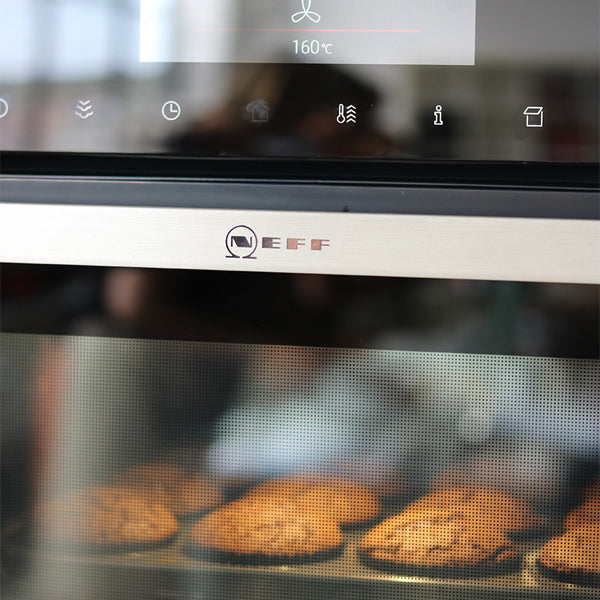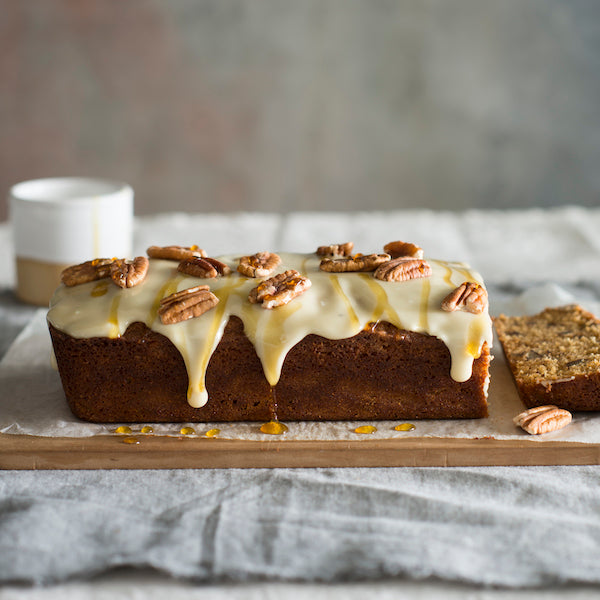BakeClub Blog

Getting to know your oven
Ovens, a key requirement for baking, can vary enormously in accuracy and usability from one to the next. On top of this, we often don’t know how to get the most from our oven when baking – what setting to use, which rack to place the food on, that kind of thing. And that is why it is so important to get those instruction books out and get to know your oven. In the meantime though, this information will help you with the essential bits.
Oven temperature and hot spots
Just like children, no oven is exactly the same, and it is important to get to know yours so you can trust your own judgement when you are using it. The first step is to buy a good-quality oven thermometer from a kitchenware store. Place it in the centre of your oven and preheat your oven. This will show you whether the oven temperature dial is accurate or not, and if it’s not, you now know how you need to adjust the setting for recipes as required. For example, if your oven runs 10°C/50°F hotter than indicated on the dial, you should preheat your oven to 10°C/50°F lower every time you use it.
You can also use your thermometer to check for hot spots in your oven, which sometimes cause baked products to rise and brown unevenly. Yep, this could well be the reason why your cakes are always lopsided, and your biscuits are never evenly coloured! Each time you preheat your oven (to the same temperature), move the thermometer to a different place and see if the temperature varies. This way you can see if your oven has hot spots. You can either get it fixed or make sure you turn your tins or trays around at least once during the baking time to help cook and brown evenly.
Oven settings
Most ovens are multifunctional and have different settings suitable for a number of cooking methods.
My three favourites to use for baking are conventional, fan-forced and fan-assisted.
1. Conventional
The Conventional setting is the most common and the most basic of settings. It means that both the top and bottom elements heat the oven with no fan. If using this setting, remember that most of the heat in the oven will be at the bottom and top. Therefore, when you are cooking a couple of trays of biscuits or multiple layers of a cake at the same time on different racks, you will need to swap them around about halfway through baking so that they cook evenly and in the same amount of time.
2. Fan-forced
When you use the fan-forced setting, the fan in the back wall of the oven evenly distributes the heat from the element that surrounds it. This means that, if this setting works efficiently in your oven, there is no need to swap or move trays of biscuits or cake layers around during the cooking process to ensure even cooking and browning, as you would if using the conventional setting.
3. Fan-assisted
This setting works in a similar way to the fan-forced, but it is the top and bottom elements in the oven, not the one at the back around the fan, that heat the oven. Again, it is the fan that distributes the heat around the oven. The benefit of this setting is that the food gets direct heat from above and below it (to crisp and brown), plus circulating air (to cook the food evenly). It is a great setting to use when baking at a reasonably high temperature (180°C and above) for a reasonably short period of time, such as is required when baking pies, pastries, biscuits and scones.
Adjusting the oven temperature to suit the setting
If you are using either the fan-forced or fan-assisted settings, you will need to make minor adjustments to the temperature and/or cooking time. The reason for this is that the fan means that the oven works more efficiently (because the air in the oven is being circulated by the fan the temperature isn’t any higher, it’s just more intense and bakes more quickly.) You therefore either have to bake for a shorter time or drop the temperature of the oven slightly.
As a rule of thumb, I find that dropping the temperature by 20°C or equilvalent in °F (for example, if the recipe specifies to preheat the oven to 180°C/350°F you will need to set the temperature to 160°C/315°F fan-forced) is the easiest adjustment to make to allow for the more intense heat. I'll then bake for the recommended time, checking it 5 minutes before the end of cooking. Make sure you note these adjustments on your recipe for next time.
Oven support
Remember, as I’ve said before, ovens do differ and it is worthwhile going through your oven’s instruction book or getting in contact with the manufacturer for more specific guidelines if you are unsure or are having trouble understanding which setting is best to use for specific recipes. Also, many manufacturers have fantastic support for their customers including pre- and post-purchase advice and at-home services so make sure you look into what is available to you and take advantage of it especially if your oven is misbehaving.








